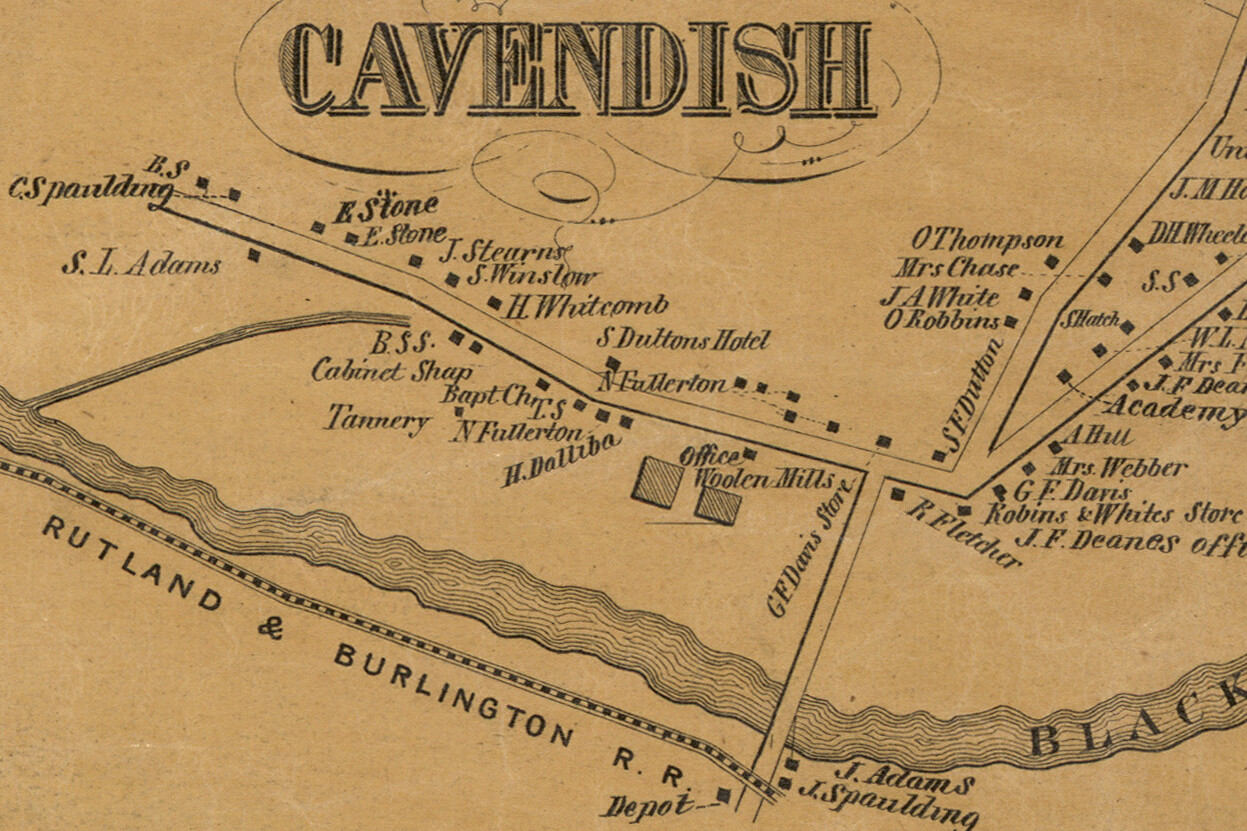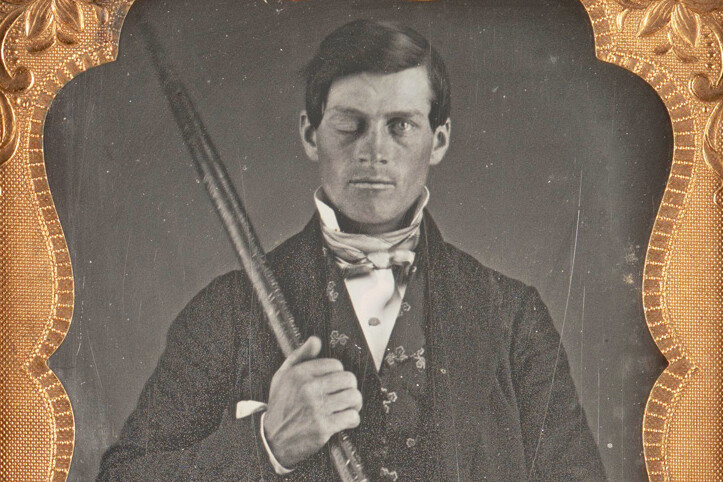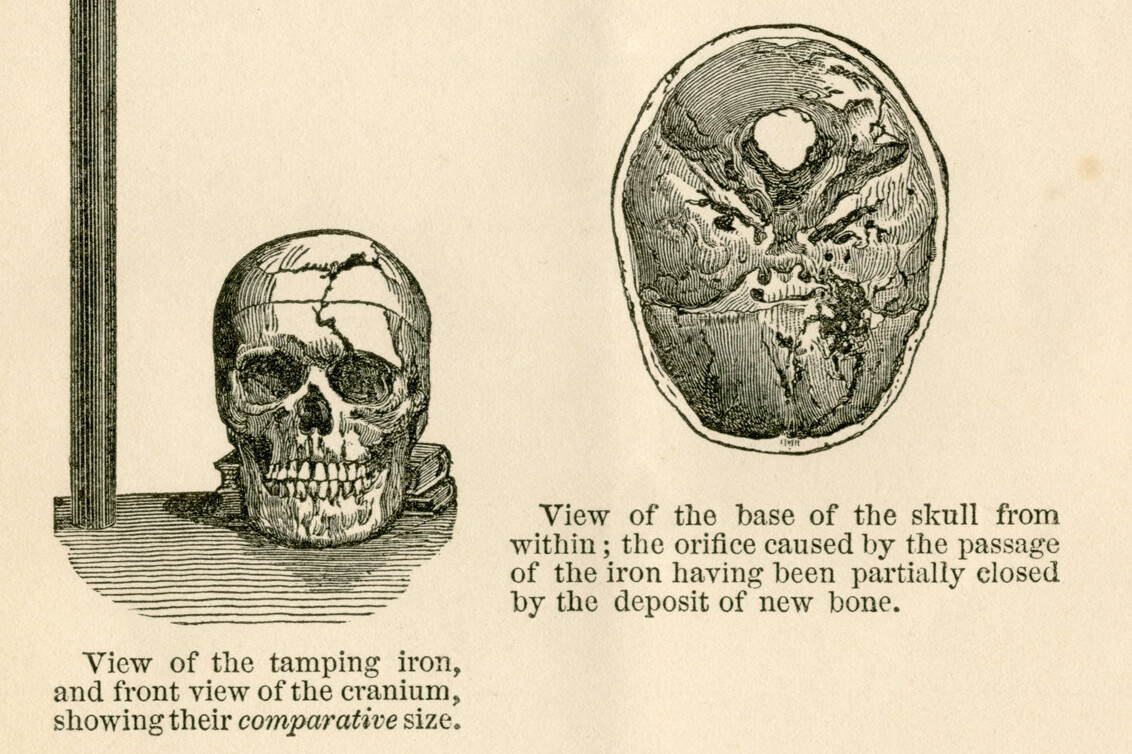Phineas Gage
How did an accident in Vermont help doctors learn about the human brain?
In 1848, Phineas Gage was the leader of a team building a new railroad in Cavendish, Vermont. Trains operate better when the tracks are on flat land. To make space for the new tracks, workers blasted through the rocky ground. They drilled holes in the rock and put gunpowder in the holes. Gage used a large metal rod, called a tamping iron, to pack a fuse(a long cord that is lit to start an explosion safely) and sand on top of the gunpowder.
On September 13, 1848, Gage had a horrible accident. There was gunpowder in the hole but no sand. The gunpowder exploded when he hit it with the metal rod. The tamping iron flew up and shot straight through his head!
Phineas Gage was lucky to be alive. Amazingly, he could still talk and walk. At the hotel in Cavendish, Dr. John Harlow wrapped Gage’s head in bandages. Doctors did not know about germs yet. The wound became infected. But after three weeks, Gage’s fever went away. His injury started to heal.
By January, Phineas Gage felt better. Only his left eye was damaged. But his injury changed him. Before the accident, Gage was a good leader and a kind friend. After the accident, he was mean to his friends and used rude language. He lost his job because he was difficult at work. His friends said he was “no longer Gage.” At that time, doctors did not understand how his brain injury could change his personality(how a person behaves and feels).
Phineas Gage lived for 11 years after the accident. He travelled to Boston to meet with doctors. He worked in South America and then in California. Wherever he went, he took the tamping iron with him. In 1860, when he was 36 years old, he died from a seizure(unusual activity in the brain that affects the body). He was buried in San Francisco with the tamping iron.
Dr. Harlow asked Hannah Gage for her son’s skull. Doctors wanted to examine the damage to his head. Harlow gave Gage’s skull and the tamping iron to Harvard University in Massachusetts. For over 170 years, doctors have studied Gage’s life and story. They discovered that different parts of the brain have different jobs. And they learned how to help people living with brain injuries.
Thinking About History
Historians ask questions to think deeply about history.
Should Phineas Gage’s skull and tamping iron have been left in his grave? Or taken to a school for doctors to study?
Learn More
Follow the links below to explore related topics.
Look at an 1848 map of the construction plan for the Rutland & Burlington Railroad. Can you see how the tracks snake through the mountains to stay on flatter ground?
Watch the Mount Holly Railroad from This Place in History
Read the article When Doctors Made House Calls from Green Mountaineer Magazine
Watch the Central Vermont Railway from This Place in History
Copy and paste this citation to show where you did your research.
Vermont Historical Society. "Phineas Gage." Vermont History Explorer. Accessed January 10, 2026. https://vermonthistoryexplorer.org/phineas-gage


